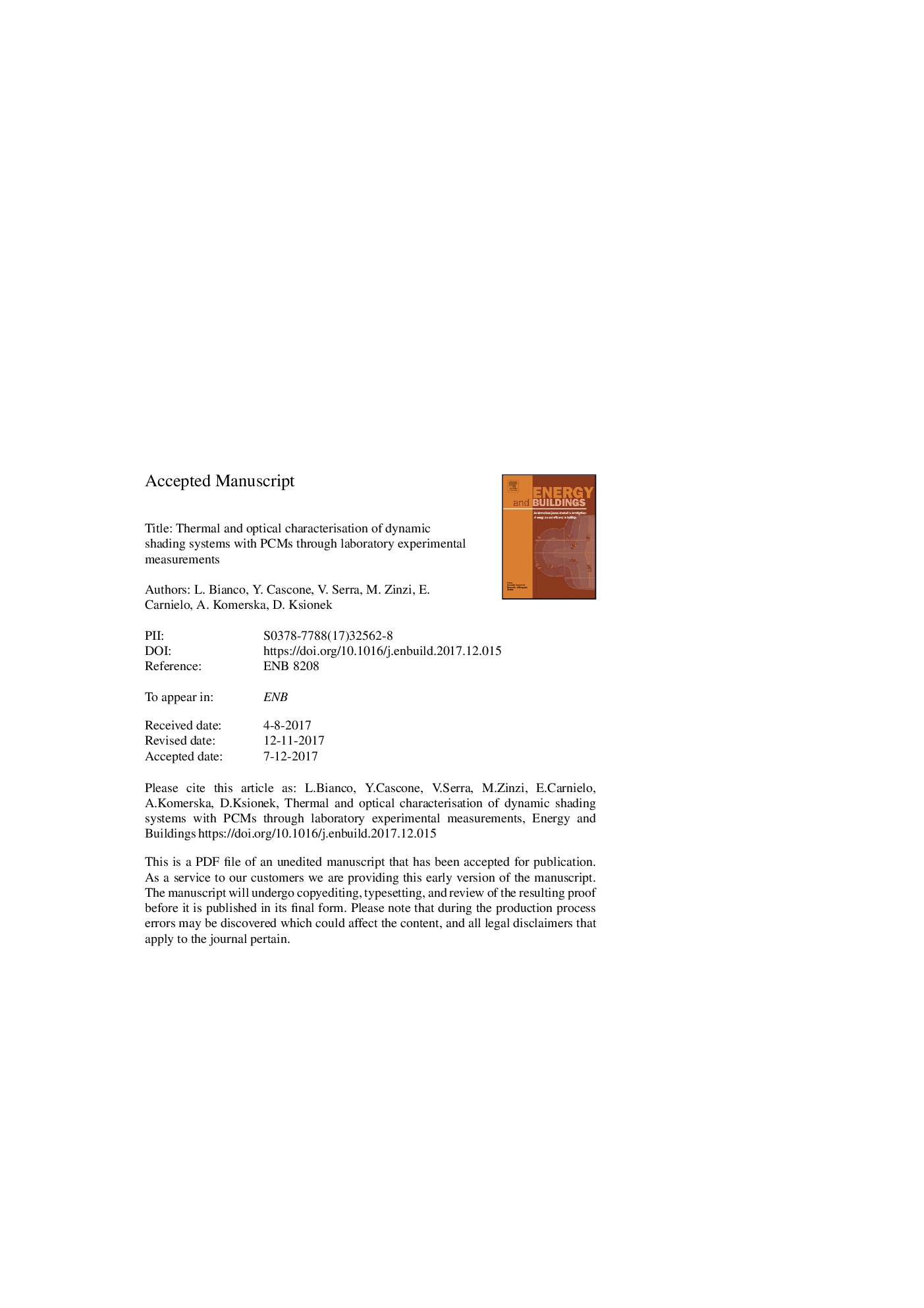| Article ID | Journal | Published Year | Pages | File Type |
|---|---|---|---|---|
| 6728903 | Energy and Buildings | 2018 | 55 Pages |
Abstract
Large transparent surfaces in building façades can be a cause of high energy demand and discomfort conditions in buildings. Since standard static solutions for glazing and shading devices are not sufficient to overcome these drawbacks, a new dynamic shading device based on the integration of phase change materials (PCM) in an alveolar polycarbonate panel was proposed. The concept of the innovative translucent shading is to act as a self-controlling device able to reduce and modulate both light and solar heat gain in the indoor environment and to improve the thermal inertia of the envelope. To provide input data for energy and daylighting computational tools on a building scale, a complete thermal and optical characterisation of the PCMs and of the dynamic shading systems was carried out. Different typologies of PCM (paraffin waxes, salt hydrates and bio-based PCMs) with different melting temperature (in the range of 26-44â¯Â°C) and different colour of the polycarbonate panel (blue, green, opal and crystal) were investigated. Specific experimental protocols were implemented to compare the properties of various configurations of the new technology. Results show that the preferable PCMs are the paraffin waxes, due to their stable thermal properties, high latent heat of fusion and narrow melting temperature range. With regard to the thermal resistance of the system, a slightly better performance was measured with the bio-based PCM. According to the optical characterisation, it can be stated that the preferable colours of polycarbonate are green and crystal. The outcomes are promising, but several limits still need to be overcome at the technological and architectural level.
Related Topics
Physical Sciences and Engineering
Energy
Renewable Energy, Sustainability and the Environment
Authors
Lorenza Bianco, Anna Komerska, Ylenia Cascone, Valentina Serra, Michele Zinzi, Emiliano Carnielo, Dariusz Ksionek,
